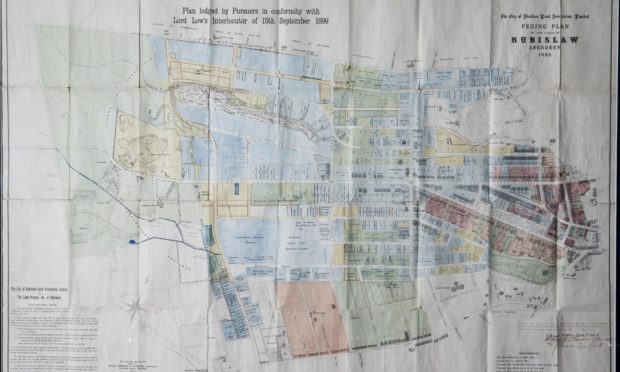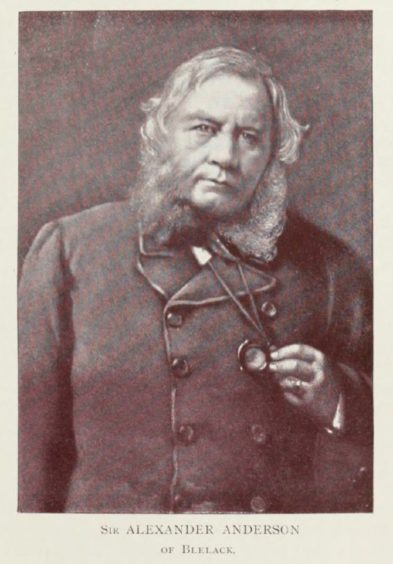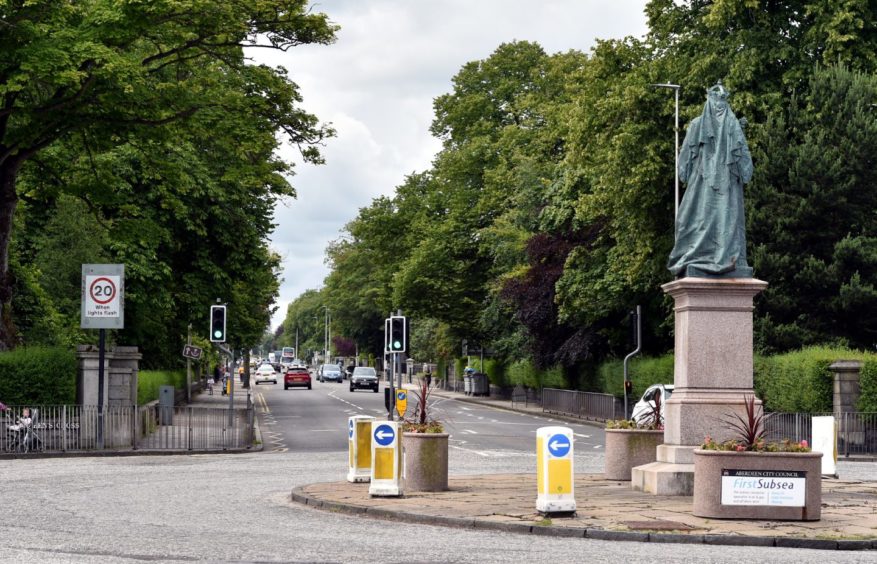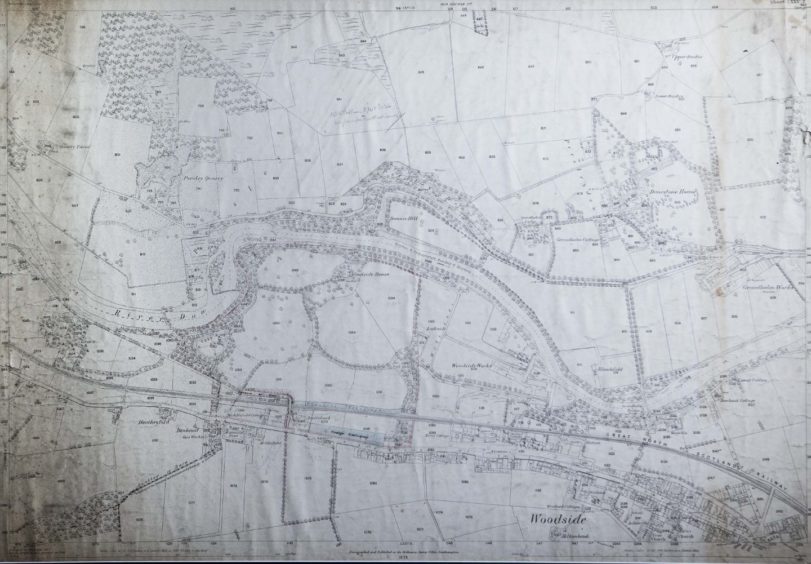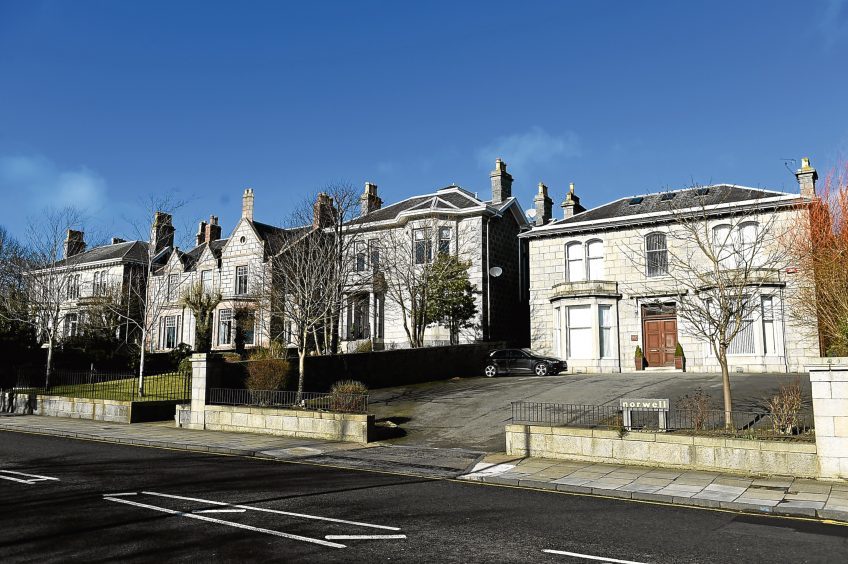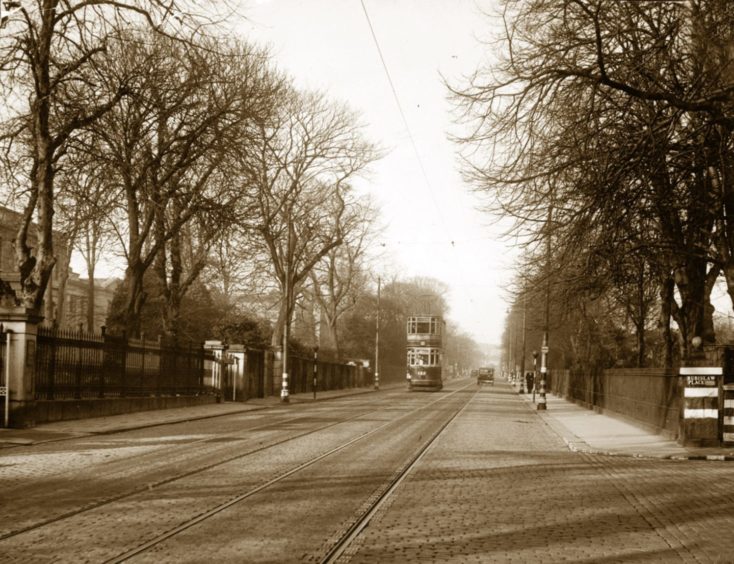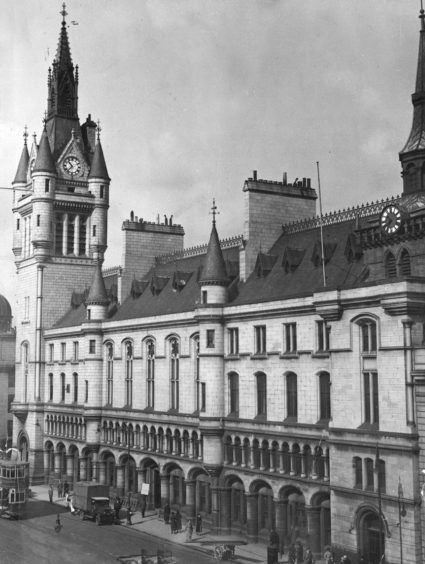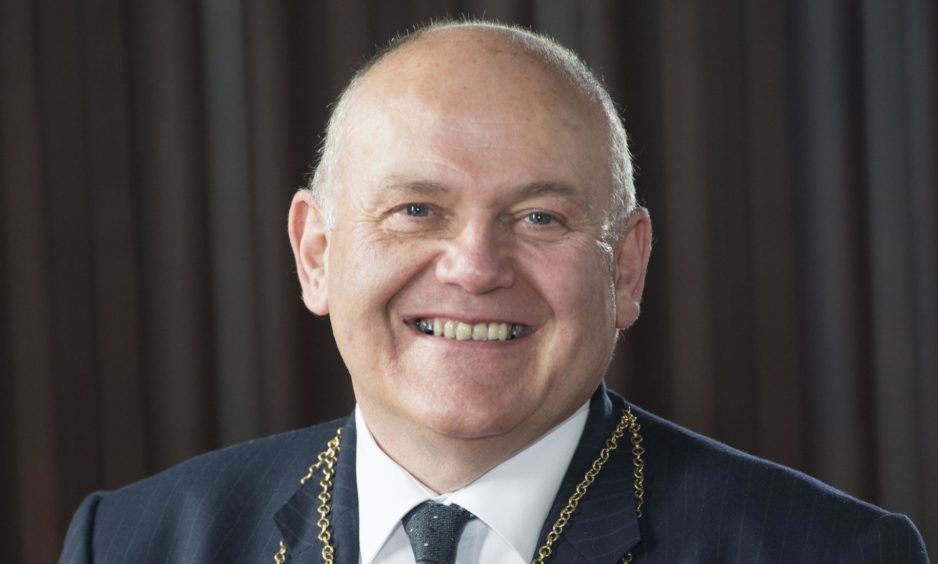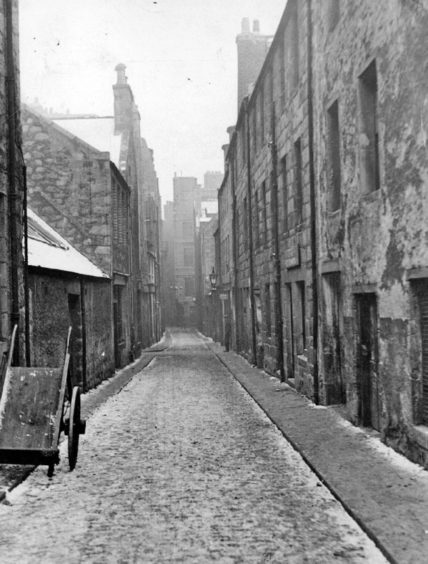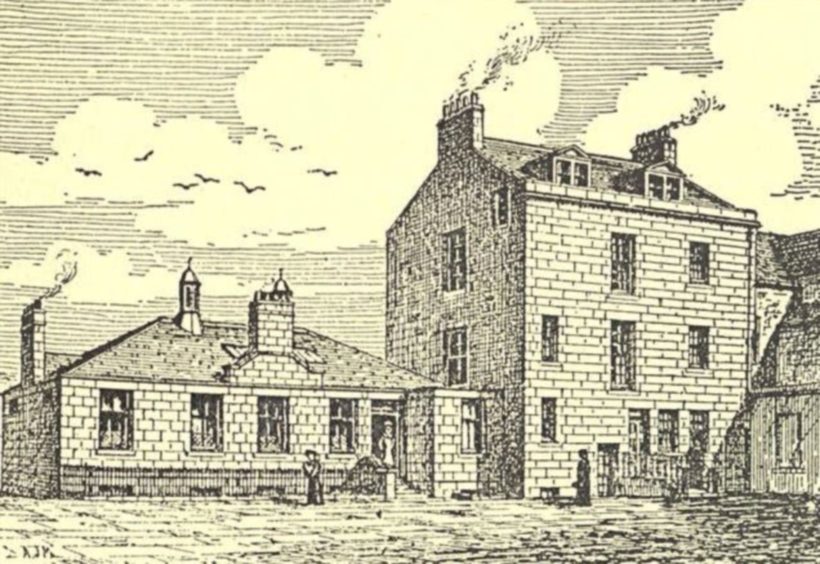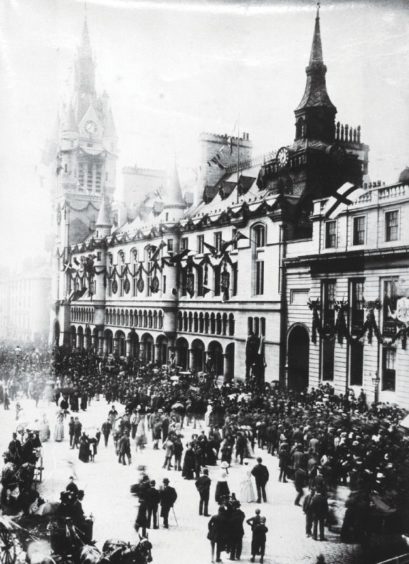Sir Alexander Anderson was the man who built Aberdeen.
And the City of Aberdeen Land Association – which he founded 145 years ago – was one of the main means by which our first official Lord Provost carved out the future, helping give the Granite City its distinctive, grand and elegant look.
Today, we still see the legacy of the foundations laid by this Victorian visionary, from the city’s water supply to the Town House to the maternity hospital.
And his land association is still flourishing – these days as CALA Homes, one of the UK’s leading housing developers.
In the years after its birth in 1875, the association shaped the appearance and feel of many parts of the Granite City, said Mike Naysmith, managing director of CALA Homes (North).
“Everything you see coming up Albyn Place and Queen’s Road, across to Mid Stocket as well, it was all set out. It was on plans. It was thought about rather than just happened,” said Mr Naysmith.
“So, really, (the association) set the scene for the entire West End of Aberdeen, the way it was built, the materials it was built with and where it was built.”
When it was set up in 1875 as a land management and feu collection agency, the association was the first Scottish company to be listed on the London Stock Exchange.
The aim of Anderson and the land association aim was straightforward, said Mr Naysmith.
“He wanted Aberdeen to look the best it possibly could. At that time he realised the best way to do that was control what was being built and lay down rules and stipulations, for what was being built, how it was being built, the materials being built with and also restricting any changes going forward.
“It meant Aberdeen could really be planned rather than just developing in the years going forward.
“It was almost what a modern day planning department would do, that’s really what CALA set up with having the ownership of the land then feuing it off to people to build their houses.
“In many ways he was the man who built Aberdeen,” said Mr Naysmith.
The association’s strict rules, including restrictions on height and structural criteria plus buildings being set back a certain distance from the road gave birth to the elegant and grand appearance of areas such Queen’s Road.
Rubislaw Den North and South,
as well, King’s Gate, all of these
have a real sense of occasion
and grandeur about them.”
“Anytime, I bring anybody to Aberdeen, the obvious route to go down is Queen’s Road and Albyn Place. It is always remarked upon how well it is done, the setting, the standards, the sizes,” said Mr Naysmith.
“Rubislaw Den North and South, as well, King’s Gate, all of these have a real sense of occasion and grandeur about them.
“Aberdeen should be proud to have these as they could stand the test of time with the West End of any city.”
CALA’s stipulations also helped ensure Aberdeen was the Granite City.
“The vast majority of the restrictions we have seen relate to certainly the front of the house was to be built with granite, the roof was to be slate,” said Mr Naysmith.
They show roads drawn in by hand,
like Anderson Drive, and some of the
other significant thoroughfares that
weren’t there at the time.”
He said CALA’s Aberdeen boardroom still hosts the original ledgers of land sales and what people could build, as well as plans of how Aberdeen was split up and the names of those who built the houses.
“They show roads drawn in by hand, like Anderson Drive, and some of the other significant thoroughfares that weren’t there at the time,” said Mr Naysmith, adding that the association owned all of the land from the top of Union Street to Rubislaw Quarry, as well as parts Torry and Cults.
The association operated in much the same way for the better part of a century, until in 1974 it was suggested it should build homes on the land it held – and so it moved into constructing and selling its own houses.
“That coinciding with oil coming to Aberdeen was obviously very successful, so we really never looked back from there,” said Mr Naysmith.
CALA’s building work helped shape much of Cults, through the 70s and 80s. It also developed quite a few properties in Polmuir Road, Inchgarth Road and also in Monymusk and Banchory.
It is obviously our homeland and
where we were founded. We still
own bits of Aberdeen – a lot of the
back lanes in the West End are still ours.”
A series of land purchases and acquisitions saw CALA, as it became in the early 80s, become one of the leading housing developers across Scotland and the UK.
And CALA, today headquartered in Edinburgh, still has very strong links to its home city of Aberdeen, said Mr Naysmith. The firm sponsors many community groups and events in Aberdeen, including an annual community bursary for needy causes across the country.
“It is obviously our homeland and where we were founded. We still own bits of Aberdeen – a lot of the back lanes in the West End are still ours,” he said.
Today CALA is looking to the future to continue its thriving business as a quality housebuilder across the country. But it will always have that nod of gratitude to Sir Alexander Anderson.
“I think he would be incredibly proud that something started in Aberdeen is now a national recognised business and that it does more than build houses.
“We give a lot back to the community, which was a part of what he was trying to do at the same time, as well.”
Debt of gratitude to city’s first official Lord Provost
Current Lord Provost Barney Crockett said today’s Aberdonians do indeed owe a debt of gratitude to his predecessor who held office from 1859 to 1866.
“Sir Alexander Anderson was some character and it was an amazing range of achievements which he had,” said Mr Crockett. “We had some incredibly vigorous folk in Aberdeen in the 19th century and he is pre-eminent amongst them.”
“He was instrumental in setting up the City of Aberdeen Land Association, the key thing was to try to pay for crucial developments the city needed through the feuing system.”
One of Anderson’s most notable achievements was the creation of a city-wide water supply and sewage systems.
“There had been very big outbreaks of cholera in other parts of the UK and in Aberdeen they had deaths due to the water-spread diseases,” said Mr Crockett.
“Improving the water supply became a critical health issue, and Anderson created the mechanism to try to pay for the first totally clean water system across the town. It was through CALA and other money-raising things.
“The new system used water from the Dee from the entry point to Aberdeen. We still use that system right now, we still have those pipes.
In fact, Mr Crockett had an uncle who was an engineer at Richards, which owned land where the input of the water supply sits. “They had great problems with leakages and he suddenly realised there was a huge leather washer on the cast iron pipes that had finally given up after more than 100 years.”
The dispensary was in the
Guestrow, the very roughest
part of town, and the doctors
provided their services free, mainly.”
His interest in public health didn’t end with clean water. Anderson also had a hand in re-organising the Aberdeen Dispensary
“It provided medical care for the poor. The council, again, had a reach everywhere. It ran whatever we had as a health service in those days. The dispensary was in the Guestrow, the very roughest part of town, and the doctors provided their services free, mainly,” said Mr Crockett.
“It then became the core of what became medical services and eventually the Maternity Hospital,” said Mr Crockett, laying the foundation for Aberdeen’s pioneering work in maternity services.
Mr Crockett said much of the 19th century engineering was critical to the city and still is today. Anderson was a key figure in all of that.
That included instigating the building of the council offices at the Town House, steering the plans through acrimonious debate, to give the city the glorious granite building it now enjoys.
Not that he was without controversy. While he was serving as Provost, he was also director of the Great North of Scotland Railway and was accused by outraged citizens of trying to line his own pockets when he suggested a rail route through the city.
“The acrimony they had in local government back then is much more extreme than even we have today,” said Mr Crockett. “The accusations that flew around were something else. Of course, the rules we now have for councillors would rule out nearly everybody in the 19th century. Interests were a very different thing then.”
Anderson, who was born in Strichen and trained as a lawyer, was also key in instigating the extensive expansion of the harbour, an incredibly ambitious project that still benefits the city today. And he also oversaw the development of Market Street.
His work was recognised in his own time. Queen Victoria both knighted him and gave him the official title of Lord Provost, the city’s first.
Mr Crockett said: “Alexander Anderson shaped our city in some of the most obvious ways; what we see as the harbour now, the water supply and the health improvements which helped the population grow, installing Aberdeen’s great history in caring for women. Not forgetting Anderson Drive, that has his name, pushing out the city. It’s all part of his legacy.”
